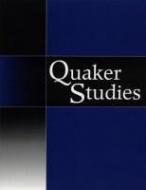
Abstract
The 1 986 Swarthmore Lecture, given by the Quaker Women's Group, was essentially a consciousness- raising exercise. It was intended to 'bring into the light' the experience of women in the Society of Friends; experience which had frequently been under-valued or ignored. Writing centred around a number of different topics including women and violence, feminist theology, women and peace, and sexism in language and education. Bringing the Invisible into the Light made a huge impact at the time of its delivery, but despite the enormous interest that it engendered, it did not lead to any major changes and no real effort was made to combat sexism within the Religious Society of Friends or to embrace gender equality in its totality. This article explores why the 1986 Swarthmore Lecture failed to live up to the hopes and expectations of so many of those who heard it.
Recommended Citation
Shellens, Hazel
(2007)
"You May Lead a Horse to Water...Friends and the 1986 Swarthmore Lecture,"
Quaker Studies: Vol. 11:
Iss.
2, Article 8.
Available at:
https://digitalcommons.georgefox.edu/quakerstudies/vol11/iss2/8
